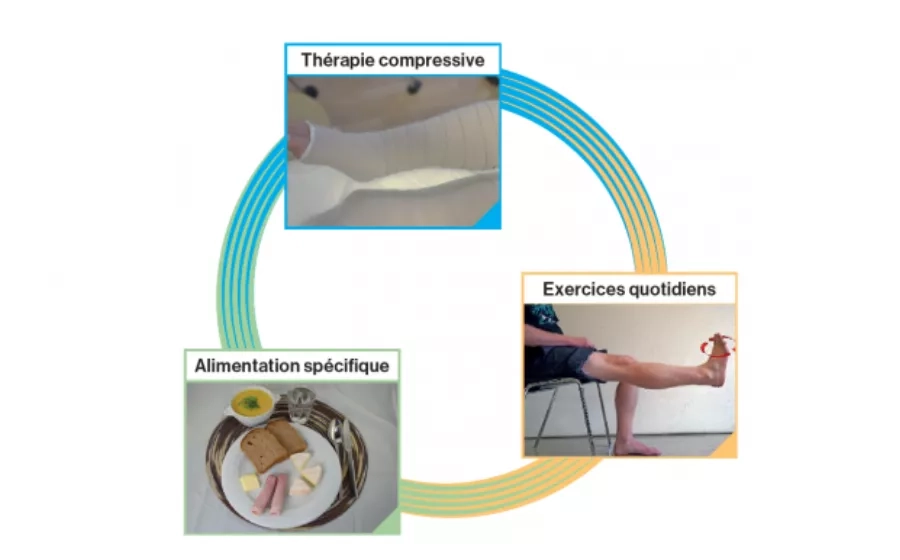Background and rationale :
Venous leg ulcers (VLU) are slow healing wounds with a recurrence rate of 70% and a 60% risk of becoming chronic. The estimated VLU prevalence in the general population is 3%. Current therapeutic approaches are multifaceted and focus on reducing wound size and improving wound healing as well as preventing ulcer recurrence. Such approaches include compression therapy, leg elevation, specific ankle-exercises and a protein rich diet. They require a pluridisciplinary team of health care professionals from the domains of nursing, medicine, physiotherapy and nutrition. However, there are no published studies describing and evaluating the impact of pluridisciplinary educational interventions on adherence to the treatment plan and wound size reduction in VLU patients.
Overall objectives :
The objectives of the projected study are to evaluate the effectiveness of nurse-led intervention for high-risk patients with VLU in terms of patient knowledge/therapy adherence and to measure the impact of this intervention on wound size reduction and its evolution over time.
Methodology of the planned study :
An international multicenter randomized controlled trial with 248 participants in three Swiss French (n= 124) and two Australian (n=124) wound clinics is proposed. The study participants will be consecutive patients of the participating clinics who fulfill the inclusion criteria. Wound care will be performed according to the hospital’s standard clinical practice guidelines. Allocation to the intervention group (IG) or the control group (CG) will be concealed. The intervention will consist of VLU patient education care bundle giving patients an opportunity to learn about the use of compression bandages, wearing and putting on compression stockings, and will include the importance of physical activity, ankle exercises, leg elevation and a high-protein diet to healing outcomes. An educational brochure summarizing these aspects will be given to the patients of the IG. The sample size assumptions are based on a two-sided alpha level of 0.05, power of 0.8, and a medium effect size. Univariate and bivariate analysis will be conducted according to the data level and distribution.
Expected results and impact :
The findings of this study will generate new knowledge and the results will contribute to VLU clinical practice guidelines to enhance patient adherence to therapy. Our results will not only help improving patients’ quality of life, but also contribute to reducing health expenditure. Additionally, it is in alignment with the National Strategy on the Prevention of Non-Communicable Diseases 2017 – 2024 establishing prevention work for people with enhanced risks and chronic conditions reinforcing protective factors such as diet and exercise.




